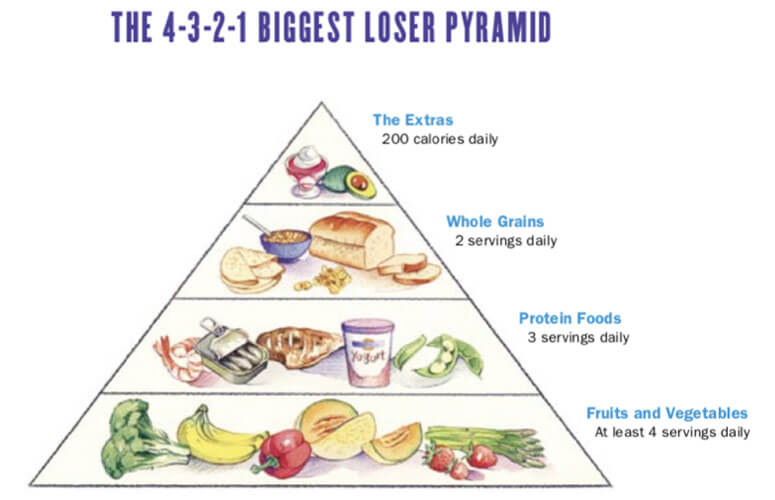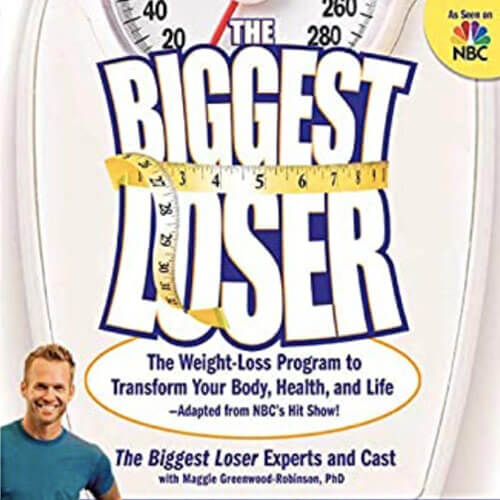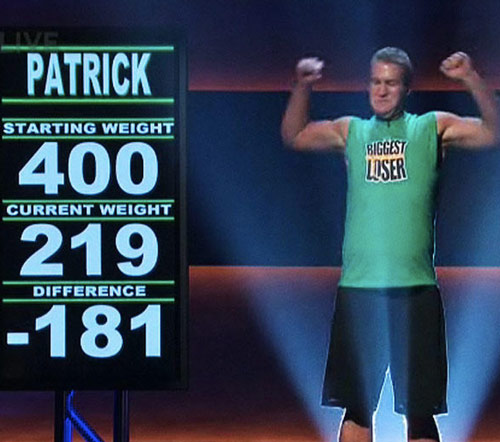My Work With The Biggest Loser Show
Below I address many common questions I get about The Biggest Loser Show. Click on the questions below to see my answers.




Below I address many common questions I get about The Biggest Loser Show. Click on the questions below to see my answers.
is a well-known reality TV show that aired during prime time on NBC for 17 seasons, from 2004 to 2016. Contestants with severe obesity competed as teams to make lifestyle changes leading to dramatic weight loss and health improvements, while living together at a ranch in Southern California. Celebrity trainers Jillian Michaels and Bob Harper were prominently featured, as well as host Allison Sweeney. The show resumed in 2020 on USA Network, hosted by Bob Harper. There have been over 30 international adaptations of the show.
I served as a consultant for the creators and producers from 2005 to 2016, as part of the team of experts. My role in the credits was a “Nutrition Doctor”.
I had been known to NBC previously. A couple years before the show aired someone from Dateline NBC had reached out to me for academic insights after seeing a media story about my research comparing popular weight loss diets. Later, when the show’s creators were looking for a nutrition and weight loss consultant, somebody at NBC remembered me at Tufts. Show co-creator Ben Silverman was a Tufts University graduate who knew about their strong reputation in nutrition science, which reinforced the show’s interest in recruiting me.
I found the premise of the show very enticing, and they reached me at a point in my career that was a good fit for my interests. Season 1 had already filmed, and I watched all the episodes on DVD, which helped convince me to get on board. I was enthusiastic about helping the show design and optimize an “anti-obesogenic environment” for rapid and dramatic health improvement. I was also eager to help the show’s creators inspire an international audience to repeatedly see the full potential of lifestyle change for disease reversal. I was optimistic that the show could help slow and improve America’s obesity epidemic, and that I could play a major role behind the scenes. I was also interested in the academic questions and clinical issues to be addressed, and the opportunity to gain experience in something new.
In the early days of the show I helped the producers with a wide variety of considerations related to the weight loss methods, aiming to simultaneously maximize safety and effectiveness. I helped create the award-winning Biggest Loser Diet, which featured a food pyramid emphasizing vegetables and fruits at the base, and generous servings of lean protein. Later, much of my efforts focused on creating the book series with colleagues, and on reviewing various food products for potential endorsement by the show. Each of these areas had significant intellectual components that required careful thought and expertise.
Yes, I liked the work very much. I felt that I was contributing in an important way to a show that inspired and motivated millions of viewers across America. Although it was just a few hours per week of effort, the questions and projects were very interesting intellectually/academically, and I put a lot of thought into the work. Also, much of the work took me into new directions and connected me with new colleagues that were terrific collaborators.
I worked closely with staff from the show’s production company and NBC Universal, and with several of the show’s experts. This included medical doctor, Robert Huizinga MD, dietitian-chef Cheryl Forberg RD, and celebrity chef Devin Alexander. I only briefly met the celebrity trainers Bob Harper and Jillian Michaels.
I was not on camera, except once as a guest on NBC’s Today Show in Manhattan along with four participants from the show. I attended several of the season finale live events filmed in Hollywood, and met many former contestants during trips to Los Angeles. I’ve also given many public presentations with and without former show participants throughout the United States.
Overall I think the show has made a favorable contribution to American society. The show was on prime time television for over a decade because the core message was so inspiring and motivational. As I wrote in this 2006 editorial in an academic journal:
“Week after week, the viewers were vividly and dramatically reminded that lifestyle changes are more than a mediocre treatment for obesity. They saw that hard work would pay off. They saw men and women representing diverse ages, backgrounds, and degrees of obesity and related medical problems reliably lose body fat and approach their biological potential. They saw the important differences the physical transformations made in the everyday lives and self-esteem of the participants. They saw what it looked like to live in an environment that did not hinder, but rather promoted a substantial investment in healthy eating and exercise.”
Some aspects were not positive. I did not like the fact that it was a contest that required someone to leave each week. Sometimes there were moments of negativity, personality clashes, or poor sportsmanship. The show was sometimes criticized by nutrition professionals for creating unrealistic expectations or a counterproductive message. It was heartbreaking to see many participants regain the weight, and I wish the show had been able to do more to help former participants maintain the weight loss.







The weight losses on the show were typically rapid and dramatic—often around 100 pounds in 100 days. A key concept of the show was to create an optimal “anti-obesogenic environment” focused on healthy eating and lots of physical activity. Another key concept was to leverage the motivational power of teamwork and competition to help participants adhere to the plan. Participants had access to a kitchen stocked with healthy food, and met weekly with a dietitian-chef who provided nutrition coaching and cooking tips. Participants were required to keep a daily food and exercise journal for review. They met weekly with a physician who specialized in sports medicine and monitored the medical progress. There was a state-of-the art gym with a full range of equipment for cardiovascular and resistance training. There was an exercise pool and trails for running and walking. Participants worked closely with physical trainers who provided personalized exercise prescriptions and monitored progress and results.
Participants were given personalized eating prescriptions that included a calorie target. The calorie target was chosen based on each person’s lean body mass and caloric needs to achieve and maintain a healthy weight. The eating prescription was not extreme or unhealthy, and focused on generous servings of vegetables and lean protein. Most contestants started in the 300 to 400 pound range, and were typically eating around 3000 to 4000 calories daily before the show. In contrast, they typically ate about half of that amount on the show, resulting in a daily calorie reduction in the 1500 to 2000 range. Dietary improvements produced at least half the weight loss seen on the show.
Daily exercise augmented the caloric reduction and weight loss dramatically. While the eating was not extreme, the exercise certainly was. Participants were typically sedentary before the show, and then started with 3 hours per day of cardio and resistance training. The amount and intensity of the exercise increased weekly according to each person’s ability to make progress. It was typical for participants to burn an additional 1500 to 2000 calories daily above and beyond what they typically did at home.
Together the eating and exercise caused weight losses of about 1 pound of fat per day due to the net caloric reduction of 3000 to 4000 calories per day. In addition, about 10 to 20 pounds of water weight came off during the first 2 weeks depending on each person’s size and degree of fluid retention before starting the show. Participants did not typically lose muscle mass, and in some cases gained it.
Over the course of 6 to 9 months, the weight loss was typically in the 35-45% (80 to 150 pound) range, as seen in each season finale. The highest percent weight losses were typically around 50%, for example going from 380 pounds to 190 pounds. These weight losses were accompanied by major improvements in various health indicators.
To maintain their weight loss, participants were intensively trained during their participation on the show. They gained experience in cooking their own meals and preparing healthy recipes, logging their food and exercise daily, and developing a daily exercise routine. They were trained in methods of logistical planning and building mental strength and resilience. A psychologist helped participants uncover and address psychological causes of overeating. The show specifically included a portion of the weight loss phase (3 to 6 months) to occur within the context of each participant’s home environment. To maintain the weight loss after the show, participants were trained to follow an eating plan that provided around 1600 to 2200 calories daily and exercise around 7 to 10 hours per week. There was a big focus on finding long-term solutions for the home environment.
Unfortunately, the intensive maintenance training during the show did not typically allow former contestants to maintain most of their fat loss. Published research studies show that after six years, on average participants maintained 27 pounds of fat loss out of 104 pounds of fat they originally lost. In other words, they eventually regained about three-quarters of the fat they lost during the show. Although this amount of fat loss is better than what other published weight loss programs have ever achieved, it is heartbreaking for the participants, the general public, and for healthcare providers.
What caused the weight regain? Was it too much food, a lack of exercise, or a slowed metabolism? There is no question that the main reason for the weight regain was too many food calories being eaten during the years following the show. While a normal calorie intake for adults is around 2000 to 2400 calories per day for a healthy weight, researchers determined the participants on the Biggest Loser show were eating around 3429 calories per day at the six-year point. This was about 10% less than they were eating before starting the show. Researchers also confirmed that the amount of weight loss after six years was closely related to the degree to which the participants were eating less and/or exercising more than they were before being on the show. Together, changes in calorie intake and exercise explained ~93% of the individual weight loss variability. Furthermore, those who kept more weight off appear to have been more successful with physical activity than with healthy eating and controlling calorie intake. Clinical experience and mathematical weight loss models indicate that if participants could have kept their food intake around 2400 calories per day, preferably complemented by moderate exercise, then most or all would have maintained their dramatic weight loss. But there’s a big difference between 2400 vs. 3400 calories daily. Those extra 1000 calories per day are to blame, and account for more than 100 pounds of excess weight and body fat. Sadly, there appears to be metabolic slowing and adaptation associated with significant weight loss, which adds insult to injury, but this is not the primary reason for weight regain, and focusing on it is counterproductive and distracts from the main reason.
The reason Biggest Loser contestants were eating so many calories (3400 rather than 2400 per day) during the years following the show is because it is so difficult not to do so. It speaks to the power of the obesogenic environment, which constantly tempts us to overeat unhealthy high-calorie addictive food and avoid physical activity. Gradually over the years, participants largely returned to old patterns as the transformative power of the Biggest Loser’s “anti-obesogenic environment” became increasingly distant.
To me, the lessons learned from the science behind the Biggest Loser show are:
I believe we, as individuals and as a society, can use these lessons learned to inspire us to make progress toward creating “anti-obesogenic environments” that are transformative and sustainable.
I’m grateful for my time with the Biggest Loser show and have great respect for the participants. I choose to celebrate their courage, hard work, and the effort they continue to invest in their health.
